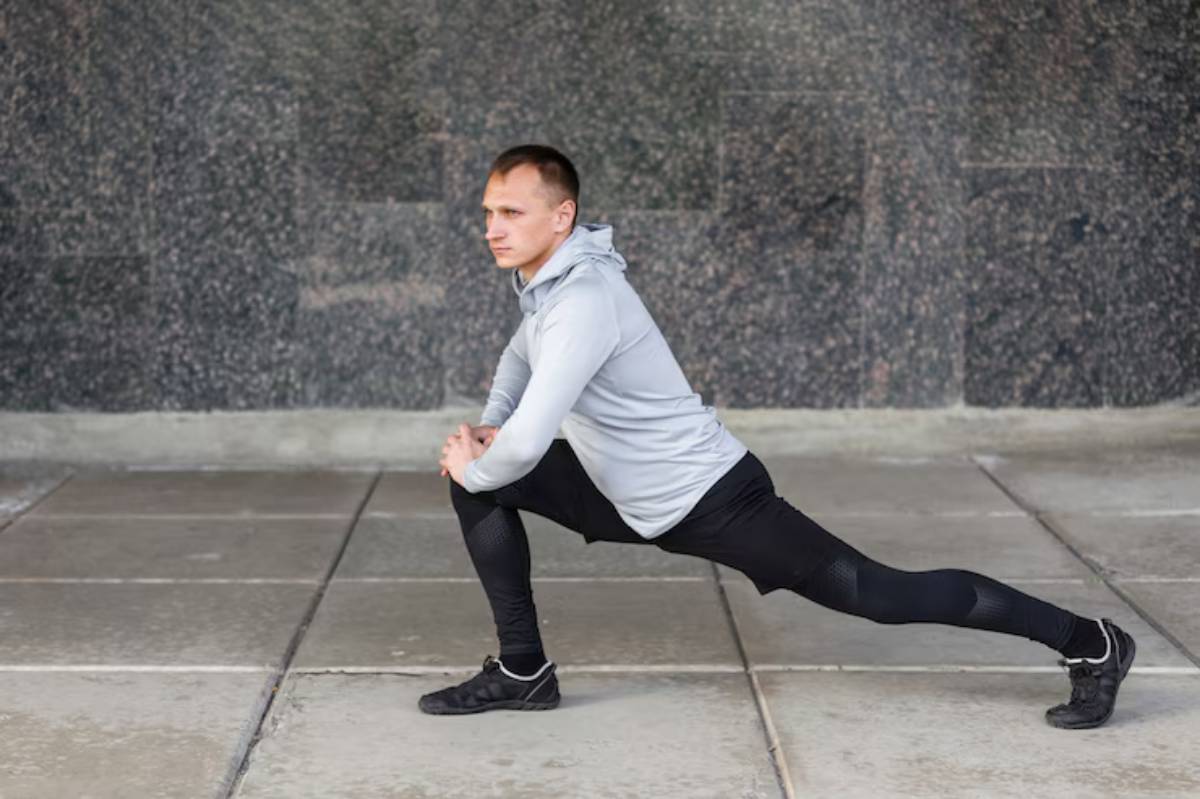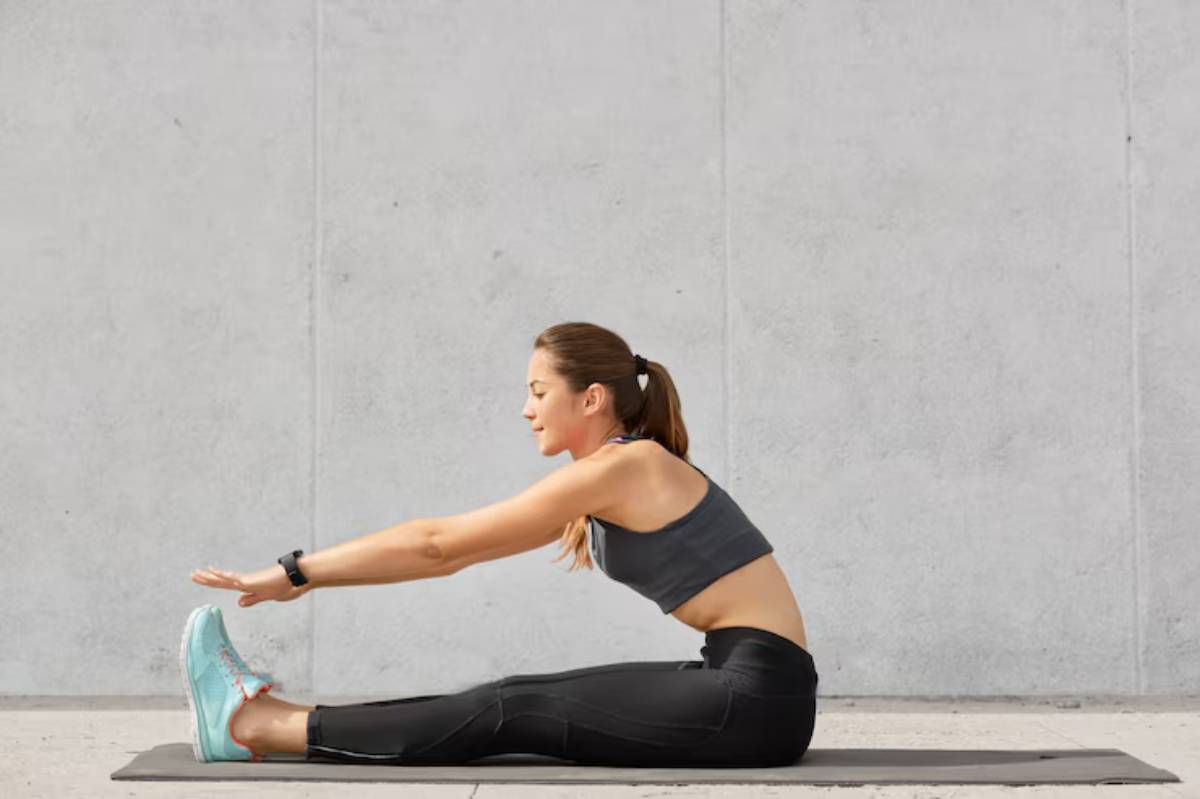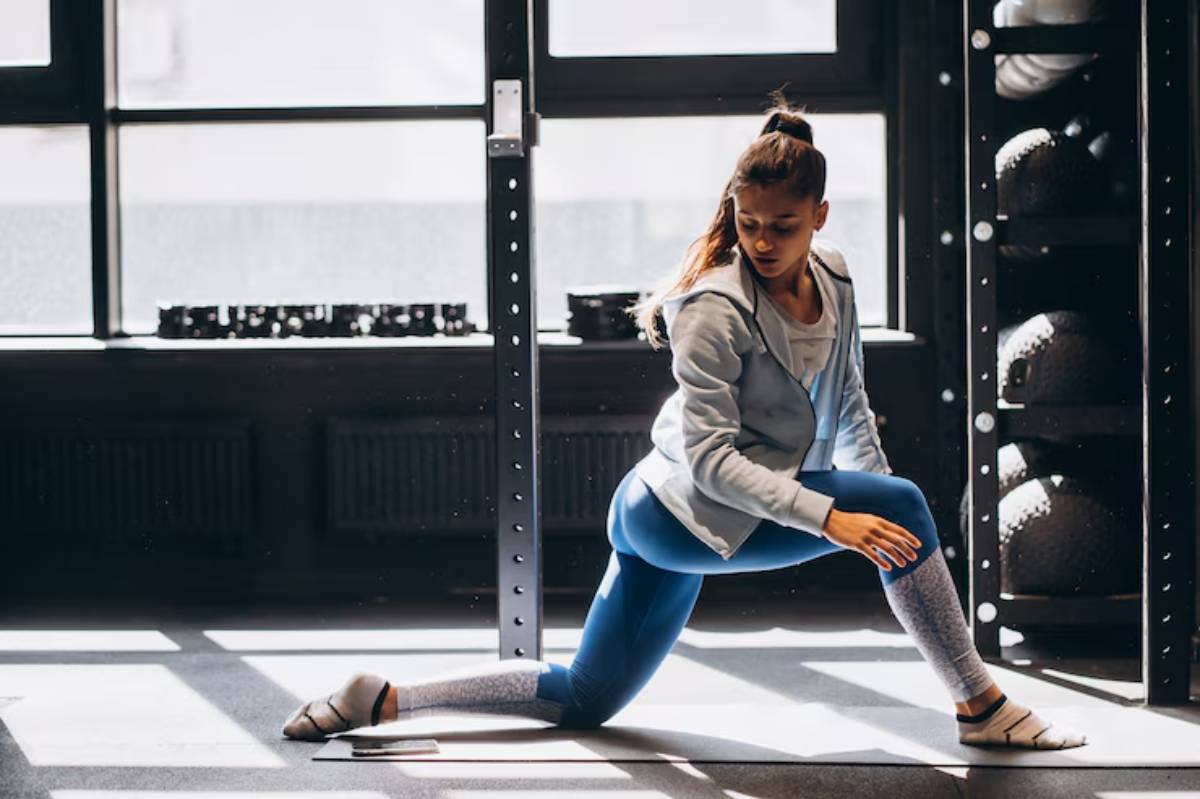
How to Structure a Full-Body Dynamic Warm-Up
You’ve probably had one of those days — you walk into the gym, eager to get moving, but your body feels like it’s running ten minutes behind. Your shoulders are stiff, your hips are tight, and your energy is low. You jump straight into your workout, hoping things will loosen up — only to feel sluggish, uncoordinated, and at risk of tweaking something by rep three.
That’s where a full-body dynamic warm-up steps in. It’s not just about avoiding injury; it’s about unlocking better movement, more strength, and sharper focus. This isn’t your typical static stretch session — it’s a mobility prep routine designed to wake up your muscles, lubricate your joints, and get your mind in the zone.
Whether you’re lifting, sprinting, climbing, or doing circuits, your warm-up sets the tone. In this blog, we’ll unpack what makes a good total body warm-up, how to structure it for flow and function, and why it’s the game-changer your training has been missing.
Why You Should Never Skip a Warm-Up
Skipping your warm-up might seem harmless when you’re short on time, but it’s a mistake that often catches up with you. Jumping into high-intensity movement without preparing your body is like revving a cold engine: inefficient at best, damaging at worst.
A structured warm-up offers:
- Increased blood flow and body temperature
- Improved joint mobility and tissue elasticity
- Better neuromuscular coordination
- Enhanced mental focus and readiness
By preparing your muscles and joints for the specific movements ahead, you’re less likely to suffer strains, pulls, or compensation injuries. You’ll also feel stronger and move more efficiently right from the first rep — no “shaky start” phase required.

Static Stretching vs Dynamic Warm-Up: What’s the Difference?
Before we get into the structure, let’s clarify a common misconception: static stretching is not the same as warming up.
Static stretching involves holding a position for 20–60 seconds. It’s useful post-workout when the goal is to lengthen muscles and promote recovery. But before exercise, static stretching can reduce muscle activation and make you feel flat.
Dynamic warm-ups, however, involve active movement through full ranges of motion. They improve circulation, stimulate the nervous system, and activate key muscle groups in a way that mirrors your upcoming activity. They’re not just safer — they’re more effective.
Building Blocks of a Full-Body Dynamic Warm-Up
A solid total body warm-up typically includes three main phases:
1. Pulse Raiser (3–5 Minutes)
Start with general movement to get the blood pumping and raise your core temperature. This primes your cardiovascular system and begins loosening up your joints.
Examples:
- Light jogging or skipping
- Jumping jacks
- High knees
- Arm swings and circles
- Torso twists
The goal here is to break a light sweat, not exhaust yourself. Think of it as flicking the “on” switch for your entire system.
2. Mobility Prep Routine (5–7 Minutes)
Once your body is warm, it’s time to mobilise the joints and activate muscles. This is where your stretch flow plan comes in. Move through sequences that mimic functional patterns—pushing, pulling, squatting, hinging, rotating—to get your body moving as a unit.
Upper Body Focus
- Scapular push-ups (activate shoulder stabilisers)
- World’s greatest stretch (targets thoracic rotation, hips, and shoulders)
- Wall slides (encourage scapular control and shoulder mobility)
Lower Body Focus
- Leg swings (front to back, side to side)
- Lunges with rotation
- Hip openers and glute bridges
Spine and Core
- Cat-cow stretches
- Standing toe taps with alternating reaches
- Bird-dogs
This phase is where you begin to layer movement with intention — your body starts syncing flexibility, strength, and coordination.
To further enhance your mobility before lifting, it’s worth exploring how a well-structured upper body dynamic warm-up can prepare your shoulders, chest, and arms for heavier compound moves.

3. Movement-Specific Activation (3–5 Minutes)
Now you want to bridge the gap between warming up and working out. Tailor your movements to mimic what you’ll be doing in your session — this primes the neuromuscular patterns for smooth, efficient execution.
If You’re Strength Training:
- Bodyweight squats or lunges
- Resistance band rows or presses
- Core bracing drills (e.g. planks, deadbugs)
If You’re Doing HIIT or Cardio:
- Fast feet
- Butt kicks
- Bounding or skipping drills
If You’re Doing Functional or Athletic Training:
- Lateral shuffles
- Bear crawls
- Crossover steps
This final phase dials everything in. You’re not just warm—you’re ready to move with control, purpose, and power.
Tailoring Your Warm-Up to Your Training Goals
Not all workouts demand the same prep. Here’s how to tweak your warm-up based on what you’re doing:
For Heavy Lifting
Focus on joint integrity and bracing. Hip mobility, glute activation, and core control are key. If you’re benching or overhead pressing, add shoulder and thoracic mobility drills.
For Mobility or Flow Sessions
Spend more time on the mobility phase. Pair breathwork with deep movements like inchworms, deep squats, and rotations. This creates space, length, and softness in the body.
For Sports or Athletic Conditioning
Prioritise speed, coordination, and lateral movement. Integrate reactive drills to wake up your nervous system.
If you’re following a recovery-focused session instead, a gentler variation may be more appropriate — a light mobility prep routine can help you stay moving without stress.
The Psychology of a Good Warm-Up
Warming up prepares your body and grounds your mind. It acts as a mental transition from your day into your workout. Those 10–15 minutes allow you to shift focus, set intention, and shake off distractions.
You’ll also notice how it helps you check in with how your body’s feeling that day. Maybe your hips feel tight, or your shoulders aren’t moving well. A mindful warm-up helps you adjust expectations and avoid pushing through poor movement patterns.
Think of it as a daily dialogue with your body. One that improves awareness and builds longevity over time.
Common Mistakes to Avoid
Despite best intentions, there are a few traps people often fall into:
- Skipping the warm-up entirely: Especially when short on time
- Treating it like a formality: Going through the motions with zero intent
- Relying on static stretches: These don’t stimulate your nervous system effectively pre-workout
- Not tailoring it to the day’s session: A squat day needs more hip focus than a run day
- Overdoing it: You shouldn’t feel gassed before your workout even begins
Be honest — have you fallen into one of these? Most of us have. But course correction is easy once you realise how much better your session feels with a proper start.
Real-Life Example: From Desk Job to Deadlift
Let’s take Sam, a 35-year-old office worker. He’s been sitting most of the day, hunched over a laptop, shoulders rolled forward. He hits the gym after work and starts squatting heavy straight away.
Within minutes, he feels tightness in his hips, a dull ache in his knees, and his depth is compromised. He’s frustrated and underperforms.
Now, imagine Sam begins with a structured full-body warm-up:
- Pulse raiser to get blood flowing
- Hip mobility and ankle prep
- Glute bridges, deep squats, and bodyweight lunges
- Band pull-aparts to wake up his back
Suddenly, everything feels smoother. His hips open up, knees track better, and he moves through his sets with power. That’s the difference proper prep makes.
Conclusion: Start How You Want to Finish
A great workout doesn’t begin with the first lift—it begins with how you prepare for it. A smart total-body warm-up isn’t just about preventing injury. It’s about respecting your body, enhancing your performance, and moving with intention.
When done right, your warm-up becomes one of the most valuable parts of your training. It gets your head in the game, primes your muscles, and helps you squeeze the most from every movement.
So next time you’re tempted to skip it, remember this: starting strong helps you finish stronger.
Take ownership of your warm-up, and let it power everything that follows. Ready to move better? Build your mobility prep into your training routine and feel the difference session after session.


